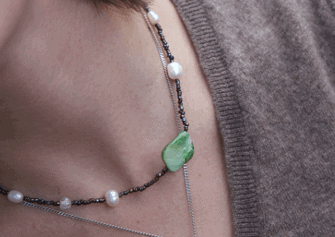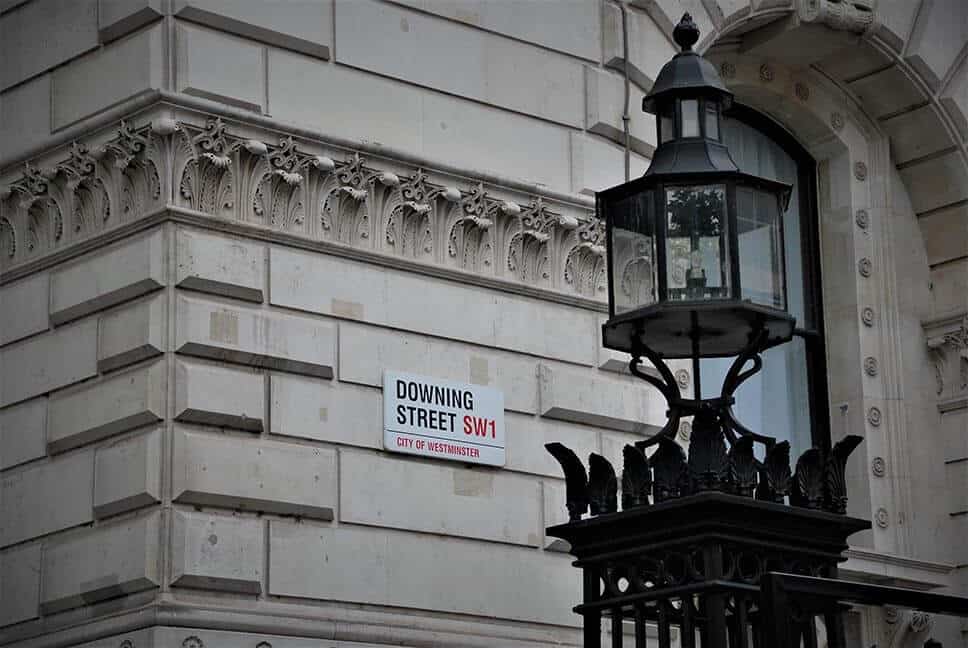Image Credit – Olivia Trimborn
‘Being Human,’ a new and permanent gallery at the Wellcome Collection offers a selection of 50 objects and artworks that explore the complexity of being human in the 21st century. These works are divided into four sections: genetics, minds & bodies, infections and environmental breakdown, and they each explore our changing relationships with ourselves, each other, and the world.
‘Environmental breakdown’ focuses on how the damage we are causing to our environment affects humans, from the things that we risk losing to how we are responding to changes and what our future could look like.
This piece of work is thought-provoking and unsettling. The life-size, sexless figure appears to be living in a dire future in which an environmental catastrophe has occurred. The surrounding air is too poisonous to inhale, which is shown through the breathing apparatus and tubes on the astronaut’s back.
The astronaut’s possessions are held together very loosely by a type of fishing net, and the suitcase is not properly shut, suggesting this person has suddenly been forced to relocate. This human could be escaping danger or in search of somewhere habitable. Further, the astronaut’s helmet is made of a shiny black surface, which not only hides the figure’s identity but reflects the face of the viewer, showing us that this is not a completely unimaginable, far-distant future.
The ‘refugee astronaut’ addresses two global issues, refugees and environmental disasters. These crises are increasingly intertwined. As climate-related hazards continue to worsen, more and more people are being forcibly displaced from their homes. A UNHCR report found that a record high of 51.9 million people had been displaced in 2021, of whom 5.9 million were due to disasters. The Pakistan floods have displaced 32 million people.
1) Wellcome Collection, 2019. Being Human Opens. Available at https://wellcomecollection.org/pages/XW5QMBEAACUAELBV [accessed 26/09/22]
2) UNHCR, 2022. The Refugee Brief – 20 May 2022. Available at https://www.unhcr.org/refugeebrief/the-refugee-brief-20-may-2022/ [accessed 26/09/22]
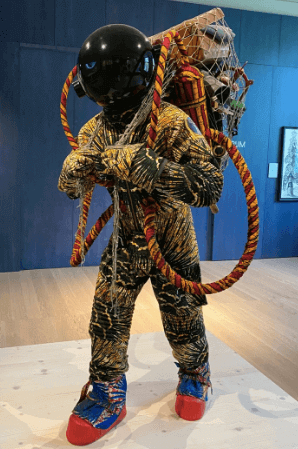
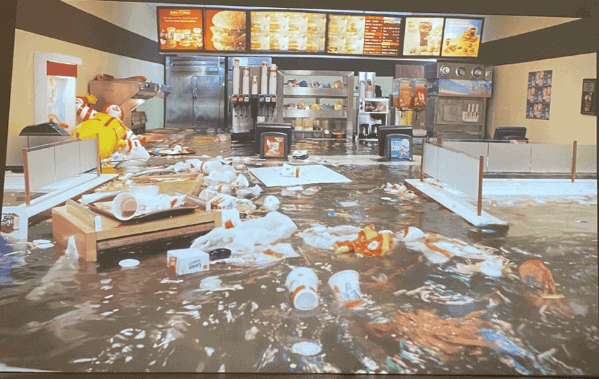
Danish group Superflex’s short film follows the same eerie tones of the Refugee Astronaut. The unsettling video shows a McDonald’s restaurant gradually flooding until it is completely submerged, with the only sound being the movements and sloshing of water. The replica restaurant was built from scratch, and was entirely handmade. It was presented in 2008, a year that was said to be “the end of the world,” with the financial crisis and worsening global warming.
Superflex’s video encourages the viewer to reflect on capitalism and consumption and to examine the role and responsibility of multinational companies like McDonald’s in contributing to climate change. The global fast-food chain produced over 56 million metric tons of greenhouse gases in 2019 – an amount that exceeds many European Nations’ emissions.
3) CDP, 2020. McDonald’s Corporation – Climate Change 2020. Available at https://corporate.mcdonalds.com/content/dam/gwscorp/assets/our-planet/climate-action/McDonalds_Corporation_%20CDP_Climate_Change_2020.pdf [accessed 26/09/22]
These pictures are from an archive of 35mm photographic slides which were taken between the 1950s and late 1980s and are part of a series of work which illustrates our inability to fully understand and comprehend our behaviour in relation to climate change. The photographs serve as documentation for environmental damage, capturing the colossal damage from floods, earthquakes, wildfires, and hurricanes.
The original images were taken by ordinary people, and much later on, Chodzko added the layers of dust and dirt to the photographs. Typically, accumulations of debris are carefully removed from slides as it can interfere with the quality of the image; regarded as visually unappealing. However, here the additions make sense and enhance the images; reminding the viewer that these events have already occurred and have been ignored for a long time, gathering dust. These photographs are a call to action, telling us that we need to change the ways in which we interact with the environment around us. However, instead we end up participating in a form of the bystander effect which illustrates ‘our passivity in response to visual signs of environmental destruction.’
These three artworks communicate a troubling and unsettling message to the viewer. They confront us with the harsh realities of climate change and illustrate what a not-so-distant future could look like on our planet.
4) Adam Chodzko, 2022. Too (2013). Available at https://www.adamchodzko.com/works/too-2013/ [accessed 26/09/22]
The exhibition is located at the Wellcome Collection in London Euston. It is currently open Tuesday – Sunday and is a permanent exhibition with free entry (October 2022).
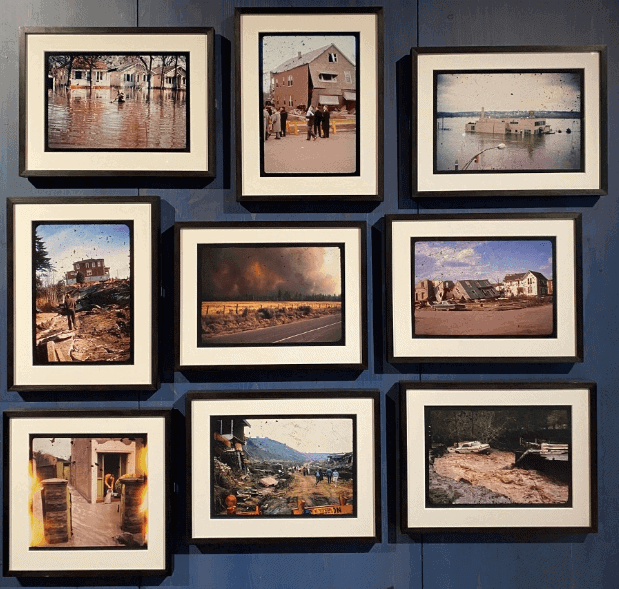

03/10/2022


